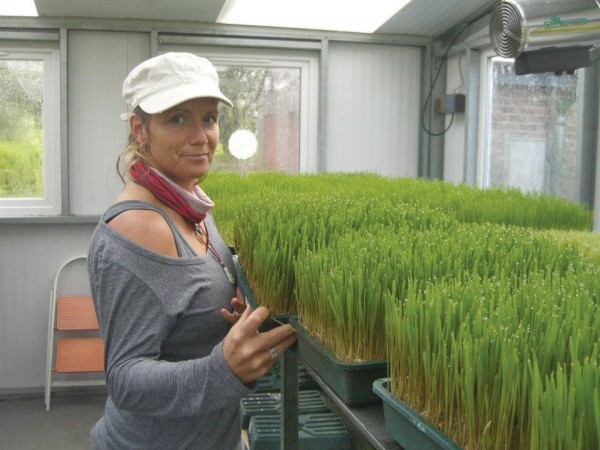
At the age of 35, Cuiva Smith was diagnosed with cancer of the liver, spleen and lymphatic system following a visit to hospital with complaints of knee pains. Doctors told her she would experience an early menopause, rendering her incapable of having further children.
Mother to a ten year old girl, Cuiva found her world disrupted, confined to bed for long stretches as the effects of her chemotherapy treatments took their toll on her body. “I was going through chemo for six months,” she tells NewsFour, “It gave me a lot of time to read, because I couldn’t do much else, so I started to research other healing alternatives to get myself through it, mentally as well as physically.”
It was through this research that Cuiva discovered wheatgrass, a popular source of nutrition that can be bought as either a juice or in powder form. After locating a grower, Morna Lynn, in Wicklow, Cuiva began consuming wheatgrass through juicing, blending it with other vegetables, and believes the plant’s healing powers were largely responsible for not only getting her through chemo, but recovering from the cancer itself.
“Most people don’t realise that when you cook vegetables you actually destroy the nutrients,” she says, “that’s why I juice everything.”
To supplement her chemo medicine, Cuiva began to juice religiously twice a day to flush the toxins out of her body. “Medicine alone isn’t always the answer,” she says, “so while the doctors pumped their drugs into me I was pumping my own as well.”
Cuiva puts so much faith in wheatgrass that she now devotes her time to helping others who have been diagnosed with cancer, introducing them to nutritional juicing. “I’m now able to give people some light where they might have otherwise thought there was no hope,” she says, “It’s nice to be able to give something back.”
People come from all over Ireland to speak with Cuiva who has even received phone calls from cancer sufferers seeking guidance as far away as Spain. She also provides help for those indirectly affected by the disease. “I work a lot with older people who have lost their partners to cancer,” she says, “I teach them about nutrition and show them how to make juices, but mostly it’s just about talking them through coping with their situation.”
Cuiva doesn’t confine her treatment to humans either. When her dog was also diagnosed with cancer, she immediately put the animal on a nutritional diet, injecting wheatgrass juice into its mouth. She claims the effects have been positive and now Cuiva enjoys walks on the beach with her four legged companion.
Though Cuiva swears by the power of wheatgrass, medical professionals are reluctant to endorse its use.
Richelle Flanagan, president of the INDI (Irish Nutrition and Dietetic Institute), tells NewsFour that her institute does not recommend the use of wheatgrass by cancer patients undergoing chemotherapy, due to potentially adverse side effects. “Wheatgrass is not known to have any major negative effects, however there have been some reported concerns with the use of wheat and increased nausea, which may ultimately affect a patient’s appetite and ability to take treatment or eat to maintain energy,” she says. “Another concern is the possible microbial contamination of the juice, which may potentially cause harm if given to an immune-compromised patient on chemotherapy.”
Richelle understands that those undergoing treatment for cancer have special nutritional requirements but believes it’s best to ask a trained professional (a doctor or dietician) for advice on the matter. “Those who wish to take wheatgrass or any other complementary therapy should inform their consultant, GP or dietician,” she says, “They can discuss with you any side effects or drug interactions and discuss if it is safe for you to continue with a complementary therapy.”
For more information on wheatgrass, visit:
www.livinggreen.ie
For advice on dealing with nutritional requirements, visit
www.indi.ie
Pictured: Cuiva Smith with the plant whose healing powers she swears by.
Picture provided by Cuiva Smith.
By Eric Hillis

